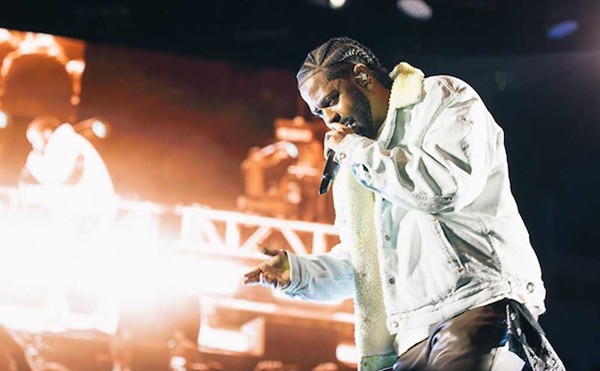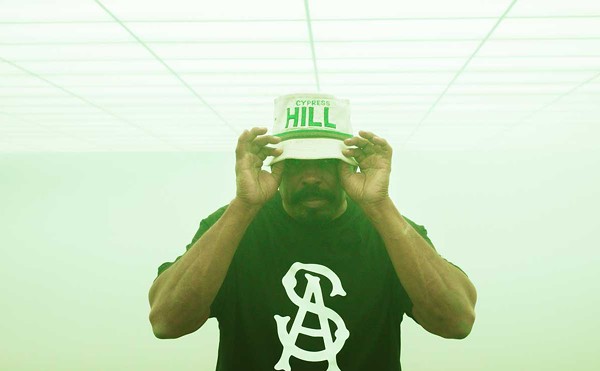Like any legendary locale ingrained in our consciousness, New Orleans' Bourbon Street is far from what it once was. Whereas barrelhouse pianists like Archibald, Tuts Washington and Cousin Joe Pleasant once philosophized over bluesy runs and shook the rafters with thunderous boogies, it's now a place where karaoke and cheap T-shirts are hawked. Where Blaze Starr once tempted Louisiana Governor Earl K. Long, college kids swill oversized hurricanes as cover bands phone in warmed-over versions of "Mustang Sally" and "Brown Eyed Girl."
But once in a great while, it's possible to stumble upon a scene that brings all the mythology of this city into graphic relief. Such a moment sparked nearly two decades ago, well after midnight, when the blue notes of a honky-tonk piano spilled from Club 711, a narrow, low-slung Creole building that beckoned its patrons through battered, permanently open hurricane shutters.
There, 24-year-old Carl Sonny Leyland held forth like the missing link between Jelly Roll Morton, Fats Domino and Jerry Lee Lewis, calling to mind the "country boy piano man playing in between the cracks" that the Coasters sang about in 1959's "That is Rock 'n' Roll." Like an archetype of some strange musical dream world, Leyland channeled exotic Crescent City rhythms, primitive blues (and boogie) and two-fisted rock 'n' roll into an authoritative style that was familiar yet all his own.
Above the rumbling 88s, his world-weary baritone belied his British heritage, gliding effortlessly into the occasional bluesy falsetto and tossing out wizened lyrics about bad luck women and back-alley gin mills and so on. His repertoire deftly touched on New Orleans' Professor Longhair, Chicago's Roosevelt Sykes and Detroit's Roy "The Hound" Hall. But most astounding were his own contributions to the canon: "Long Time in the Ground" (since popularized by genre-jumping guitar wiz Deke Dickerson) was a vehement anthem of blazing independence; "The Honky Tonk Wine" a ragged-but-right struggle to negotiate the night life; "I Believed ..." a pronounced admission of shattered faith over love gone wrong.
Such snapshots showed their author to be not only a world-class musician and songwriter, but a poet, philosopher and a keen observer of life. Fifteen solo albums later, Leyland may be best known for his work with such artists as Big Sandy & the Fly-Rite Boys, Billy Boy Arnold, Lowell Fulson, and Anson Funderburgh & the Rockets — but when he makes his Detroit-area debut this week, he'll be where he's belonged: front and center, leading a band augmented by local rockabilly and blues guitar legend Steve Nardella.
"I very rarely lead a rock 'n' roll band anymore, so I'm really looking forward to it," Leyland says from his home in rural California, where he remains busy with his boogie-woogie trio amid various collaborations with West Coast jazz and blues musicians.
Raised in the working-class community of Southampton, England, rock 'n' roll was his livelihood after landing in New Orleans in the late '80s. It was no easy task there; the city's rich musical legacy has often been obscured by a musical shortsightedness that begins and ends with the Meters, Dr. John and the Neville Brothers.
"There was this attitude that nothing existed before or after that and, in particular, before," he says, recalling the time a patron leaned over as he was about to launch into his opening number and asked what kind of music he played. "For lack of a more detailed description, I said, 'I play 1950s rock 'n' roll.' And he looked at me with this superior look and said, 'Isn't that a contradiction in terms?' I was actually on the stage when he said this ... when someone makes a statement like that, what do you say?"
If you're Carl Sonny Leyland, you don't say anything. You just lay some Smiley Lewis on 'em and let the boogie talk. The originator of mid-century New Orleans R&B classics like "Blue Monday," "I Hear You Knocking" and "One Night," Lewis' star was largely eclipsed by Fats Domino's recordings of those very tunes, but that was all the more reason to play his songs on a nightly basis.
"There's kind of an archaic feeling that's blended with the rhythm and blues in his records that's so old world; something in his voice that sounds like he could have been singing in the 1920s," Leyland says of Lewis. "The thing that I found inspiring about New Orleans is that despite the fact that someone like Smiley Lewis isn't really revered today, his vibe still oozes out of the woodwork."
It's exactly this kind of cosmic connection that sparked Leyland's interest in music as a child and continues to do so to this day. Although his tastes run from the blue yodels of Jimmie Rodgers to the ground-breaking jazz of Lester Young, his father's early rock 'n' roll records were his first Rosetta stone.
"I've always liked the mystic aspects of music," he says, "and there was something unfathomable about those records that really struck me. It's like, all of a sudden, you're feeling something strange and good and weird, you don't really know why. And you wonder: How can this piece of black plastic inspire those kinds of feelings? Really, that's always what's attracted me to the kinds of music that I like. When I first heard [blues guitarist] Elmore James, I remember there was just a really unearthly vibe about the sound of it. I feel the same way about a lot of the rockabilly recordings — the Billy Lee Riley songs. Just the echoey, distant sound. There's something transcendent about it.
"There was just a complete freedom of exchange of ideas back then," he continues. "There wasn't a freedom in society for people of different races to mix, but people weren't controlling what they were influenced by, unless there was a religious objection where they thought it was the devil's music. I don't think black musicians were at a point then where they were thinking, 'Oh, man, I can't be influenced by a white record.' And white musicians, I'm sure for the most part, weren't thinking, 'Oh, that's black music, I can't do that.'"
Upon getting his first taste of boogie-woogie at age 15, he began teaching himself the piano and was hired by a local blues outfit six months later. Shortly thereafter, an LP by Chicago bandleader Jazz Gillum ignited his long time fascination with RCA Victor's 1940s Bluebird recordings, many of them featuring Motor City pianist Big Maceo Merriweather. Regarded as some of the finest combo recordings in all of blues music, they remain a cornerstone of the Leyland sound; their influence surfacing on albums ranging from his swan song, I'm Wise (recorded at London's Toe Rag Studio years before the White Stripes put it on the map), to recently released platters like Railroad Boogie (Komodo), Back In The Alley (Pianomania) and, especially, The Carl Sonny Leyland Trio Meets Nathan James and Ben Hernandez (Sacred Cat).
"The Bluebird recordings were made in the pre-electric Chicago era," he explains, "so although they do have electric guitar, it's not like the stuff that started to come through around '53 or '54; the stuff that people think of as Chicago blues now. But they're the ultimate. The drums are not overpowering at all, they have kind of a weird, jazzy, pre-shuffle sound to them, and you can really hear the left hand and the right hand of the piano. All the players on those records had a lot to say — Tampa Red, Washboard Sam, the first Sonny Boy Williamson. The songs are really interesting and I really enjoy people who were eloquent within the blues, people like Roosevelt Sykes, who was a poet, a great songwriter with endless ideas. You hear it and you smile and think, 'Man, that's really cool the way he said that.' It's like studying an ancient religious text; you read between the lines and try to get the hidden truths out of it."
Carl Sonny Leyland (with a Detroit band led by Steve Nardella) appears with the Meltdowns, DJ Savage Matt and DJ Vinyl Junkie at 9 p.m. Thursday, Dec. 13, at the Berkley Front, 3087 12 Mile Road, Berkley; 248-547-3331; $7.
Michael Hurtt writes about music for Metro Times. Send comments to [email protected]




